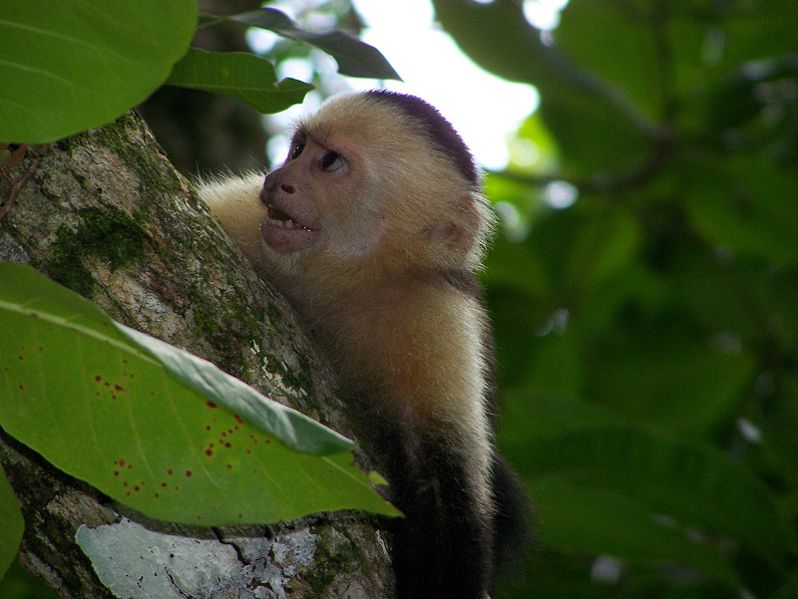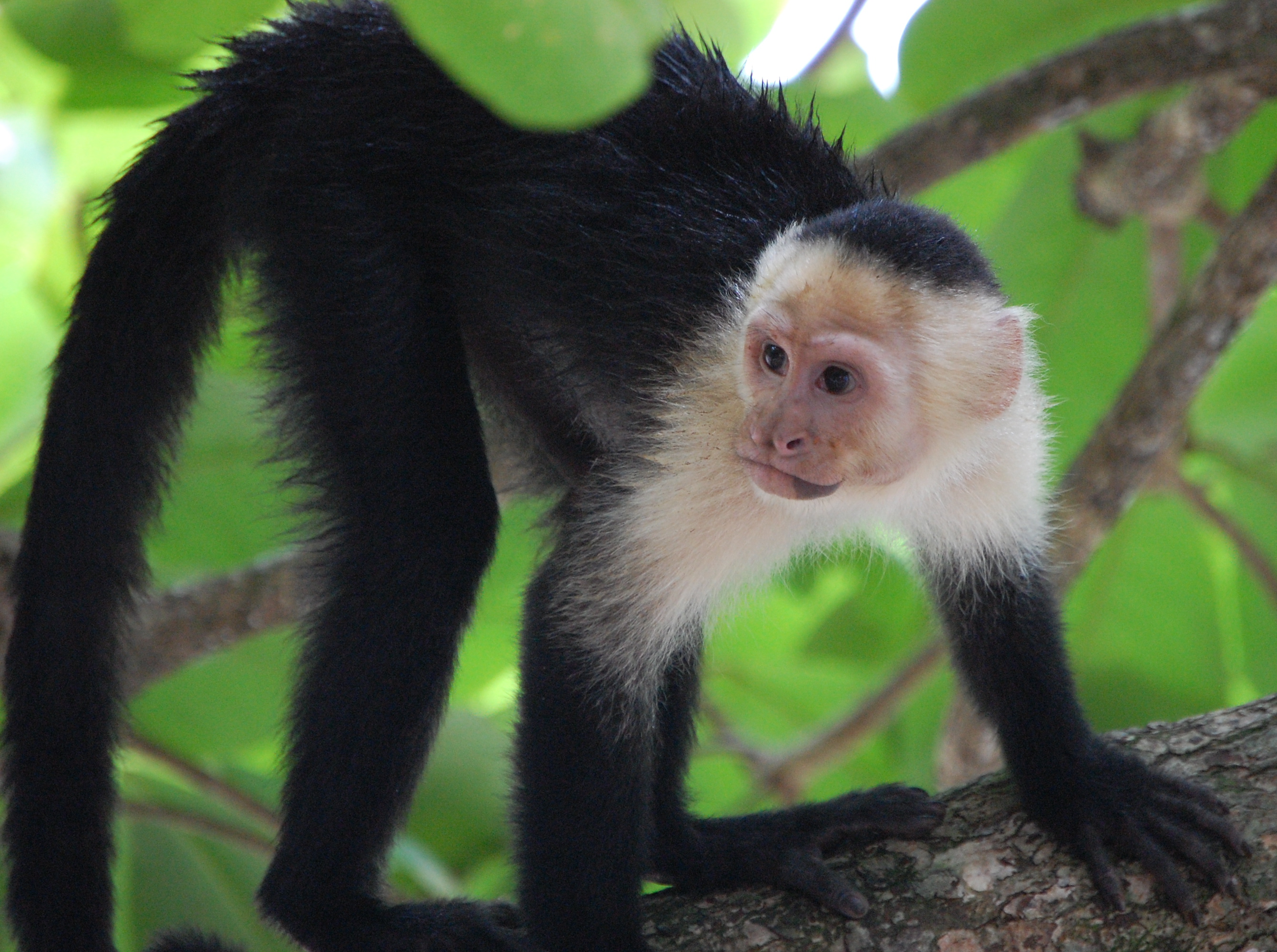Interactions
Interactions within the group
Cebus capucinus are very social animals
(Long 2012). Due to the danger of
predators, C. capucinus travel in groups of about 6 to
30 monkeys. Usually, there are more female capuchins within the
group than there are males (Kavanagh
1984). The group of monkeys is led by the dominant males who
enforce strict rules within the group
(Fobes, King 1982). The female capuchins usually stay in the
group that they are born into for their whole life, however the
males usually leave the group at the age of four to find a
different group.
usually leave the group at the age of four to find a
different group.
C. capucinus are always aware of where the others are and
have evolved a system of gestures to communicate with each other
(Fobes, King 1982). The C.
capucinus have a very advanced system of communication. If
there is a predator, one monkey would warn the entire group.
They communicate by moving their body certain ways, yelling,
touching each other, the smells that they secrete, facial
expressions, the noises they make, biting and climbing on one
another. For example, if a C. capucinus puckers their
lips, it is like blowing a kiss. When trying to impress a
female, a male might warble with a high pitch and try to
persuade her that he is good enough for her. C. capucinus
also have small fingers that are useful for grooming and eating.
During the day, C. capucinus spread out over several
hundred meters so that each monkey has room to move around. At
night, they gather in groups of two to four monkeys on a branch
in taller trees for protection. C. capucinus are very
defensive of their territory and will yell at others when there
is an intruder and chase rivals away
(Kavanagh 1984).
Interactions with other monkeys
The Cebus capucinus are usually a peaceful group of
monkeys (Holloway 1974). The
squirrel monkeys often follow the C. capucinus,
especially when foraging for food. The C. capucinus
stir up insects from little spaces and the squirrel
 monkeys
follow and eat whatever the C. capucinus do not eat.
When casually eating, the C. capucinus will follow the
squirrel monkeys. However, when the monkeys were quickly moving
to a new place to eat and there was a major movement, the C.
capucinus would lead all of the monkeys, including the
squirrel monkeys. If a squirrel monkey would run ahead and go a
different direction than the C. capucinus, once it
realized they were going a different direction, it would turn
around and follow the C. capucinus. When feeding, the
other monkeys would stop and wait for the C. capucinus,
however, when other monkeys were feeding the C. capucinus
would keep moving and the other monkeys would have to catch up
when they were done feeding (Richard
1985).
monkeys
follow and eat whatever the C. capucinus do not eat.
When casually eating, the C. capucinus will follow the
squirrel monkeys. However, when the monkeys were quickly moving
to a new place to eat and there was a major movement, the C.
capucinus would lead all of the monkeys, including the
squirrel monkeys. If a squirrel monkey would run ahead and go a
different direction than the C. capucinus, once it
realized they were going a different direction, it would turn
around and follow the C. capucinus. When feeding, the
other monkeys would stop and wait for the C. capucinus,
however, when other monkeys were feeding the C. capucinus
would keep moving and the other monkeys would have to catch up
when they were done feeding (Richard
1985).
Predators
Because they are very intelligent, C. capucinus are
often hard to catch for predators
(Kavanagh 1984).
Tree boas,
lanceheads and other types of
snakes are the most prominent predators for Cebus capucinus.
Some other common predators also include
caimans, which are a
type of alligator,
jaguars,
ocelots, and large birds, such as
harp eagles (Long 2012). The group of
capuchins has a specific call for a predator and they usually
group together to overcome the predator or run away from it
(Kavanagh 1984). Another predator
of the C. capucinus is humans. Because C. capucinus
are easy to train, many humans catch them and use them for
quadriplegic people or for use as street entertainment. The meat
of C. capucinus is also a prized item for humans and
the monkeys are hunted for that
(Rainforest Alliance 2013).
Intelligence
Cebus capucinus are some of the most intelligent monkeys
(Kavanagh 1984).The C.
capucinus have developed the ability to be able to use
tools to their advantage. For example, they have learned how use
sticks and branches to acquire food that they are unable to
reach (Schultz 1969). C.
capucinus have also learned how to open hard shelled nuts
by beating them against a tree or hitting two together to
acquire the food inside. C. capucinus that live by the
shore gather and eat oysters when there is a low tide and the
oysters are easier to obtain (Kavanagh
1984).